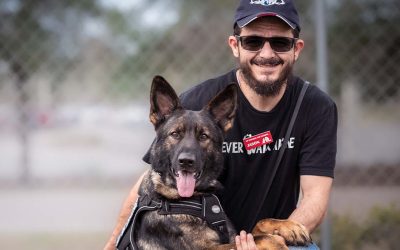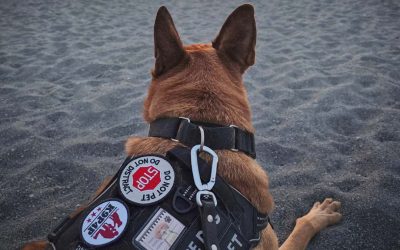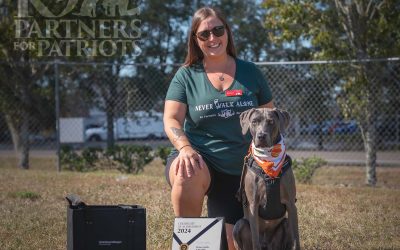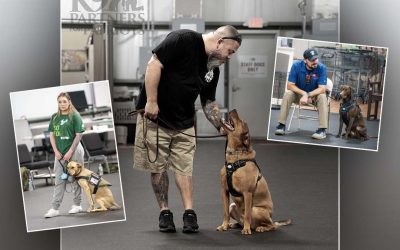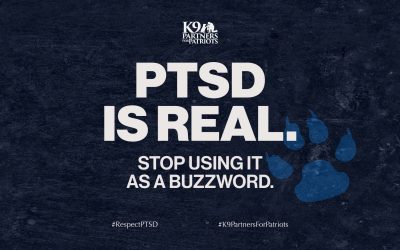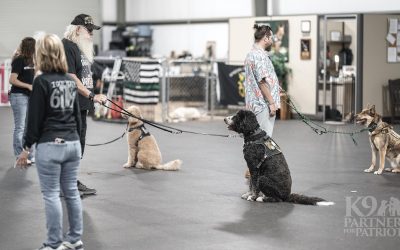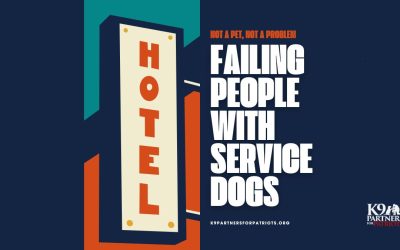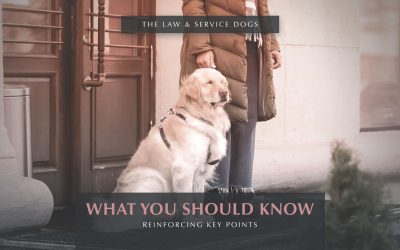
Welcome FAQ
Frequently asked questionsCommon Questions Regarding Your Service Dog
Why Service Dogs Must Be Spayed or Neutered
Discover why spaying or neutering is essential for service dogs. Learn how this step protects the dog’s health, ensures focus, and safeguards the veteran–dog bond.
A Life-Saving Grant: How Cencora Impact Foundation Helped a Veteran and His Service Dog Heal
Discover how the Cencora Impact Foundation’s veterinary health grant saved a veteran’s service dog and restored hope through K9 Partners for Patriots’ service dog training program.
How Service Dog Akula Helped Kathy Reclaim Her Life After PTSD and Chronic Pain
Kathy, a disabled U.S. Air Force veteran, shares her thoughts on life before her service dog, and how it’s going now. She and Akula graduated from K9 Partners for Patriots Service Dog Academy in April, 2023.In the military I was an x-ray technician. I’ve seen things...
From Isolation to Independence: Britnee and Service Dog Odin’s Journey
Air Force veteran Britnee was discharged in 2012 and she graduated from the K9 Partners for Patriots Service Dog Training Academy with her K9 partner Odin, in Nov. 2024.I was having a hard time leaving the house by myself, sometimes even getting out of bed. If I had...
How Service Dogs Help Veterans Manage PTSD Symptoms
For many veterans, life after service comes with invisible scars. Post-Traumatic Stress Disorder (PTSD) can make everyday life overwhelming, affecting sleep, relationships, and the ability to feel safe in the world. Nightmares, flashbacks, anxiety, and hypervigilance...
PTSD Awareness: Why Misusing the Term Hurts Everyone
Misusing “PTSD” isn’t harmless — it undermines real trauma and those who live with it every day. At K9 Partners for Patriots, we see firsthand the challenges veterans face and the healing power of service dogs. Learn why protecting the meaning of PTSD matters for survivors everywhere.
Military Sexual Trauma (MST) Awareness and Healing for Veterans
Military Sexual Trauma affects veterans across all branches. Learn how K9 Partners for Patriots helps survivors heal through service dogs and community support.
What is a Service Dog—and Who Qualifies?
Discover the key differences between service dogs, therapy dogs, and emotional support animals. Learn how psychiatric service dogs are specially trained to perform specific tasks that help individuals with PTSD and other mental health conditions.
Not a Pet Not a Problem: How Hotels Are Violating Federal Law and Failing People with Service Dogs
A veteran with a service dog was told to use a side door. Here’s why that’s illegal—and what every hotel needs to know about service dog rights.
Service Dog Law and Your Rights
Learn about the rights of individuals with service animals, and resources for further education. This article recaps essential information to ensure understanding of ADA guidelines and service animal access.
Q: What are the benefits of crate training?
Q: Will you always need to keep your dog crated?
Q: What are the benefits of range feeding vs. morning/evening meals?
Q: Why do I need to carry a dog pack?
A: You always need to be prepared to have the items needed to care for your dog. We recommend the following to be included in your “dog pack”:
- Water/Food Bowl
- Food/treats
- Towel/blanket
- Extra leash/extra collar
- Bottled water
- Copy of Shot records
- Benadryl/Imodium/pepto bismol/phazyme
- Flexi leash for bathroom purposes
- Poop bags
Q: How do I introduce my dog to another dog?
A: Most dog fights are caused by people. Typically those fall into three (3) categories:
- People wanting their dogs to meet other dogs too fast
- People not paying attention to their dogs and the signals from the dogs
- People that let their dogs do whatever they want and have no control over their dog
Do not assume that just because your dog is friendly there would be no problem. Dogs are pack animals and there is a hierarchy. Always ask the owner first if their dog is dog-friendly. If so, then both dog owners approach each other from an angle (never straight on). Watch your dog for any signs of aggression/anxiety etc.
You always want to make this a positive situation. Even if the dogs look good at their first meeting, do not automatically let them play, take it slow. You do not want the dogs to have a bad experience.
Never put your dog into the dog run with another dog until you have cleared with the owner to be sure the other dog is not dog aggressive. Always keep in mind that some dogs play hard and some dogs play soft.
Q: How do I stop /biting/nipping/teething/mouthing of my dog?
Q: Should I let other people pet or give my SD treats?
A: Normally the answer is NO, but it is truly up to you as the handler. Please keep in mind though, if you allow it to happen on a regular basis while your SD has its working harness on, you are ultimately teaching your SD, that it’s okay for them to leave you if someone is trying to pet or give them treats.
We teach that no one is allowed to pet your SD while it has its harness on and is working. We also teach that no one other than you should give your SD treats. If you want to allow your SD to be petted by someone, please take off their harness so they know that s/he has some free time to “mingle”. If someone offers your SD a treat, ask the person to hand the treat to you, and you will give the treat to your dog.
Q: How do I stop my dog from chewing things? (Shoes, Underwear, etc.)
A: This is all going to depend on what the dog is chewing. At the end of the day, your SD is still a dog, and will at some point do “dog” things. In the dog world, if they have “access” to something then, it’s fair game.
That being said, if your SD is chewing items like shoes, underwear, etc., put those items up and in an area that your SD will not have access to them. If they get into something, because you’re not watching/paying attention to them, then ultimately it’s YOUR fault. When you cannot watch your SD, put them in their crate. This will not only keep them safe, but your belongings safe as well.
Q: Should I let my SD outside by itself at my house?
Q: How do I handle Confrontation / Access Issues / Certification Questions?
A: We will go over these in depth in your classes. A lot of the problems that SD teams face, are simply due to a business entity not knowing the laws regarding SD’s/SDiT’s. It is our job as SD teams, to do our best to educate the public. The public can be unforgiving with their questions. They can be downright rude about things. The biggest thing to remember if you’re being confronted is to STAY CALM.
At the beginner level of training, you should ONLY be taking your SDiT to places where pets are allowed (PetSmart, Petco, Tractor Supply, Lowe’s, etc.). This should cut down on issues where confrontation/access are concerned.
If at any time, you have an issue at an establishment, get their contact information and one of our staff members will contact them.
